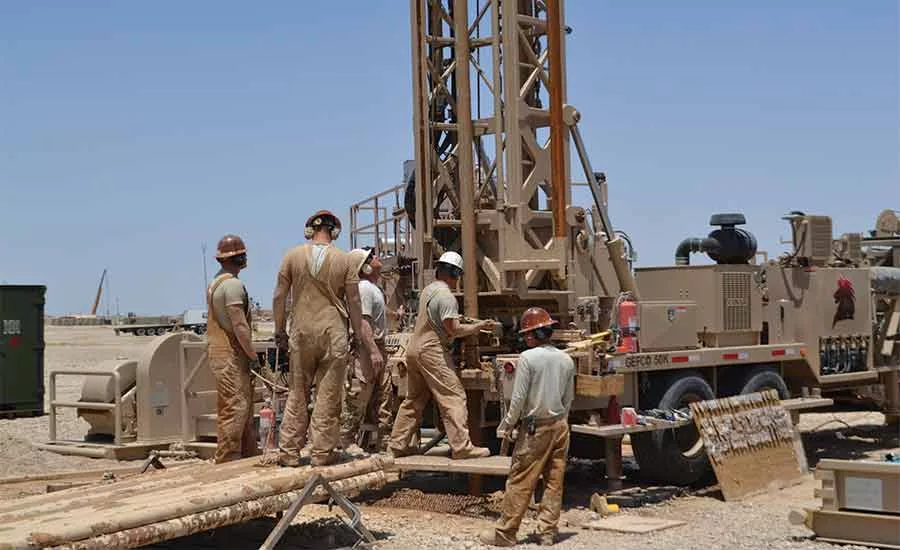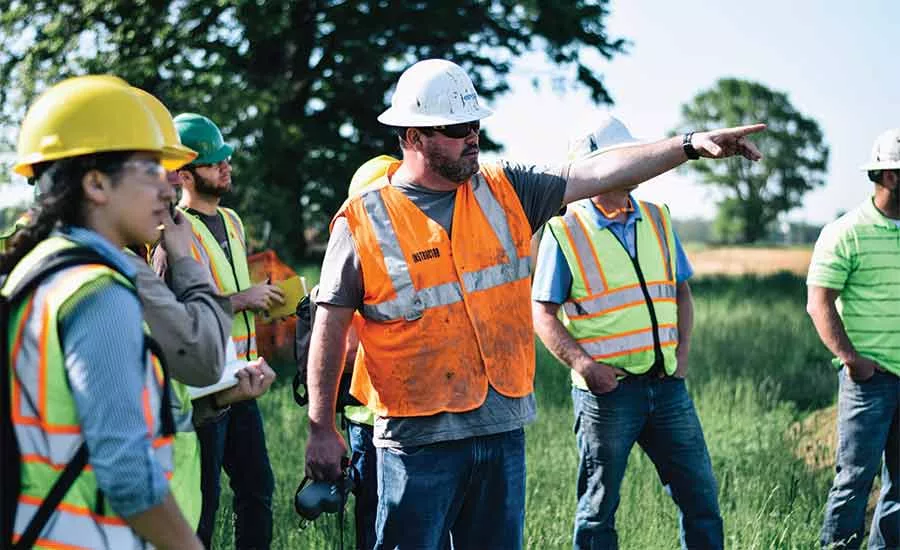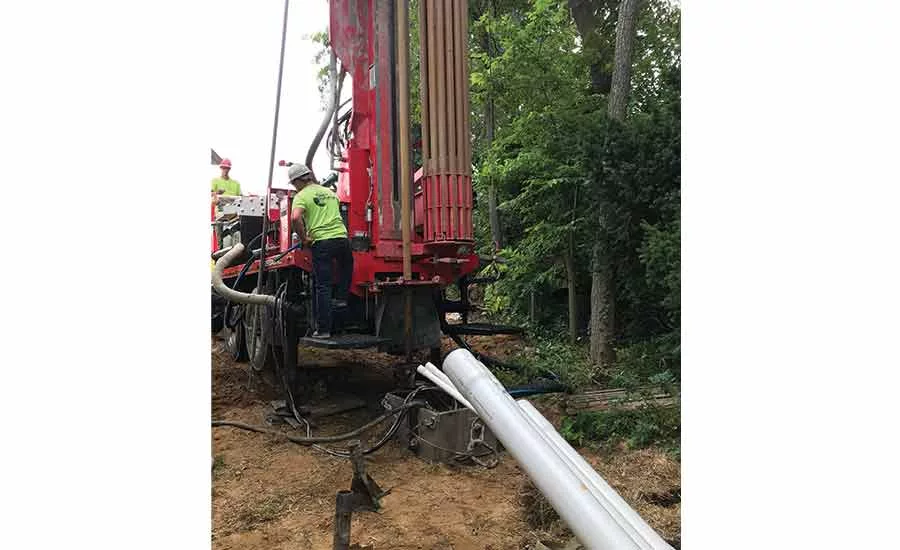Drilling Injuries a Sign of Unsafe Industry Culture

Safety on the jobsite is a culture that starts in a company or organization’s leadership, then permeates down to crews running the equipment.
Source: Brock Yordy photos



Safety starts with employees who make good choices when completing tasks. Good decisions are made by well informed and trained workers who understand standard operating procedure, along with all risks involved. Does your company perform every task safely? Do you operate safely 100 percent of the time?
I ask every drilling company I work with those questions. I ask the questions for my safety and to understand all aspects of a project. When I pose those questions to the operations team in the office, the answer is immediately “Yes,” or “Of course we operate safely; it is part of our core values.” When I ask the same questions in the field, I sometimes get a “Yes” from the supervisor. Other times I am told, “Listen, we have a job to get done, and sometimes that job becomes difficult and someone might have to bleed a little bit to meet our completion deadline.”
Drilling is one of the only construction industries that openly accepts jobsite injuries as part of the job. In fact, missing fingers, scars, burns and bad backs are recognized as badges of honor — signs of a lifetime of drilling experience. However, the real badge of honor is retiring with good hearing, all your appendages and a sound back. This mindset is so prevalent that it is common to belittle anyone onsite that speaks up with a safety concern. I recently had a discussion with a group of drillers about how many employees are required to drill a well efficiently. The conversation shifted sideways when drillers started to criticize anyone who operated with more than two men onsite. Several drillers made it a point to brag about how they often drilled alone. “Real men are capable of drilling and performing well completion alone,” they told me. First, not one rig manufacturer in the world advocates drilling alone. Second, in my experience, real men alone on a real drill rig can quickly become really dead. Drilling alone is not a good choice, and it’s why our safety culture needs improvement.
JSA
It is easy to say that it is the employee’s responsibility to understand the job and risks involved. Then, the job starts and that responsibility is pushed aside by the difficulty of the task at hand — maybe tripping 2,000 feet of drill pipe or setting a 72-inch cage in a caisson hole. Job safety analysis (JSA) can help reinforce the responsibility back into the operation by identifying risks and proper procedures to complete the task. On the OSHA.gov website, there is a sample JSA for tripping drill pipe on an oil and gas rig. The JSA starts by listing the proper personal protection equipment (PPE), special tools and other equipment required. Next, it contains the eight steps needed for tripping pipe, along with potential hazards and recommended procedures.
JSA is not a new concept, or even new to National Driller; author Bill Murphy wrote an excellent article about JSA in October 2017. JSA is a standard tool for many industries with complex tasks, and should be utilized on every drilling project. The key to a thorough JSA is full crew participation and input. Everyone involved in the work should partake in writing and reviewing the JSA. A step-by-step discussion should take place with a candid conversation about any questionable action. Group discussion can be very impactful for creating a proper procedure that is both the most efficient and minimizes risk. JSA can become an excellent tool for operations and for training in the correct way to complete a task.
Practical Field Training & Evaluation
United States Army General George S. Patton said, “You fight like you train.” Does your company “Drill like you train”? Maybe, if your company drills in a conference room with 25 colleagues viewing a PowerPoint on operating procedures while eating donuts. Classroom training is perfect for introducing new information, safety regulations and procedure overview. However, as an industry, we are missing a critical aspect by not taking the entire team in the field. A great training session requires everyone to have an opportunity to operate and evaluate live drilling procedures.
In February, I spent a week teaching a full classroom of drillers and senior leadership on vertical rotary drilling. The most rewarding aspect of the week was watching the company’s senior leadership, including safety, purchasing and the vice president of operations, evaluate each task during live drill demonstrations. The rig utilized in the safety walk around, mud drilling and air drilling demonstration was a 30K from their own fleet. I required the 30K to be operated by the driller who used the rig most often.
By the end of the week, the drill teams and senior leadership had a new shared understanding of field operations. They collectively created a list of new safety requirements and better ways to complete tasks. Actual field training allows new and experienced employees the opportunity to fail without causing a significant injury or downtime issue. I believe the best training is actual operation as it is done every day. We must drill like we train.
Cognitive Dissonance
Drilling is a self-taught industry with many field operations happening within a cloud of secrecy. This cloud creates two realities: what is expected to occur and what really happens. These realities put the safety coordinator and operational management in the dark as to how a job is completed. The safety coordinator believes that, since company policy is to operate safely, then the drill teams will comply. Management believes that the safety coordinator has implemented their intent by training and posting signage for the proper utilization of tools and protective equipment, assuming that’s the only way the employees will operate. Yet, often, the wrong tool is utilized or someone fails to wear the adequate PPE on any given day. These actions can result in valuable employees getting hurt.
Unsafe acts in the drilling industry are an epidemic, while many safety supervisors believe that tasks are being completed safely. ... Our industry’s cognitive dissonance in the way we operate must be resolved — and not just on paper, but also in the decisions made onsite.
In larger companies, a violation of safety policy will result in an employee’s termination. However, drilling is a specialized skill developed through experience, and an unsafe employee can find work the next day with a competitor. Alternatively, hazardous actions are ignored because the company can’t afford to lose a driller. Unsafe acts in the drilling industry are an epidemic, while many safety supervisors believe that tasks are being completed safely. In reality, unsafe practices are all too common, whether crews are using massive hammers, aluminum pipe wrenches or ineffective hoisting practices. The concept that jobsite injuries are a rite of passage has to stop. Our industry’s cognitive dissonance in the way we operate must be resolved — and not just on paper, but also in the decisions made onsite.
Safe and efficient projects are completed daily around the globe. On these projects, employees make good choices and bad choices. The difference between finishing safe and a catastrophic failure is the number of bad decisions made. It all starts with the employee’s conscious choice to complete all operations the way they were meant to be done, creating a good choice mindset. This mindset will reduce the option for making bad decisions. Next, a company that creates a training program that includes time for practical field evaluation, along with team collaboration for JSAs and safety documentation, will further decrease jobsite near misses and recordable incidents. When good choices, training and collaborative safety become part of a company’s culture, operating hours between lost-time incidents change from days to years. Improving the safety culture on and off the jobsite creates productive, healthy people and equipment. The real badge of honor is retiring healthy with the ability to hear and play with your grandchildren.
Looking for a reprint of this article?
From high-res PDFs to custom plaques, order your copy today!






